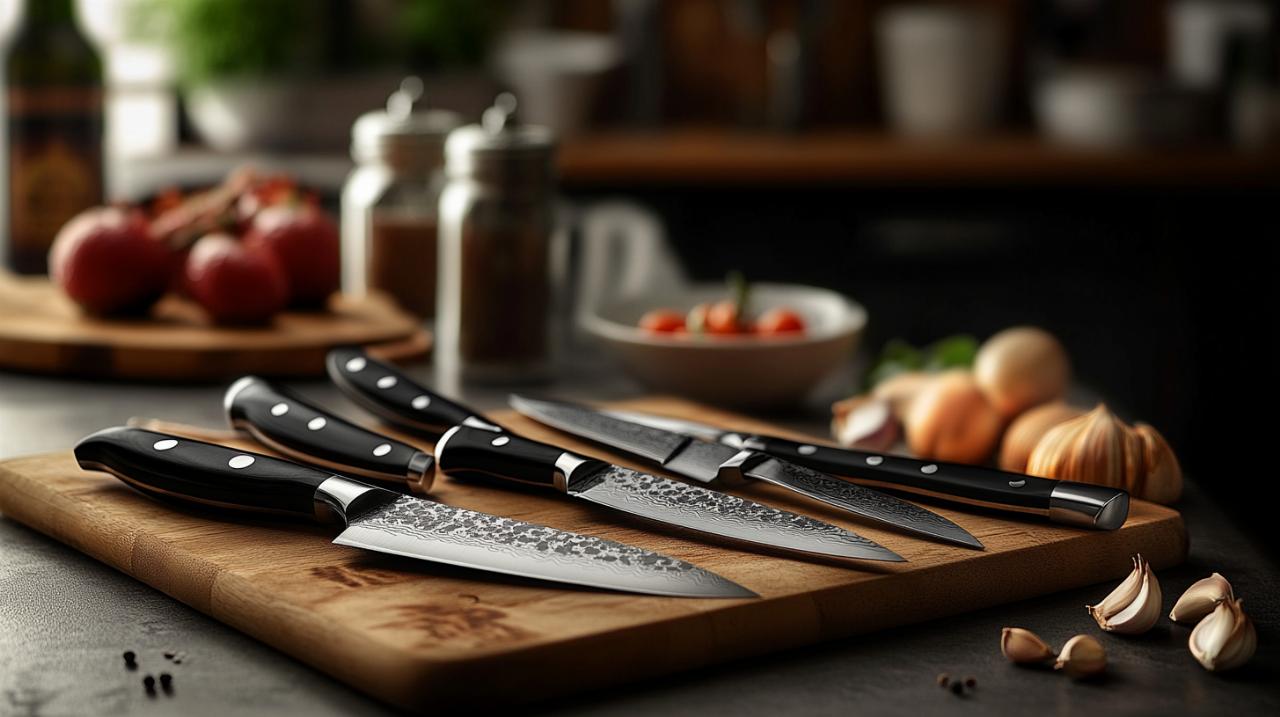The quest for the perfect knife set often leads discerning home cooks and culinary enthusiasts to ponder the essential characteristics that truly separate an exceptional collection from a merely adequate one. Whilst sharpness frequently captures the attention of those browsing through kitchen retailers, the significance of balance and overall performance cannot be overstated. These elements combine to determine whether a knife feels like an extension of the hand or merely a cumbersome tool during preparation.
Understanding the Importance of Balance in Premium Knife Sets
When one considers the hallmarks of a superior knife, balance emerges as a critical yet often underestimated attribute. A well-balanced blade ensures that the weight is distributed harmoniously between the handle and the cutting edge, allowing for precise control without causing undue strain on the wrist and forearm. This characteristic becomes particularly important during extended cooking sessions, where fatigue can compromise both technique and safety. The construction method plays a pivotal role in achieving this equilibrium, with full-tang designs demonstrating superior balance compared to partial-tang alternatives.
What proper weight distribution means for your cooking experience
Proper weight distribution transforms the act of chopping, slicing, and dicing from a laborious chore into an effortless motion. When holding a chef's knife with optimal balance, the pivot point rests naturally at the bolster where the blade meets the handle, creating a fulcrum that requires minimal effort to control. This thoughtful knife performance analysis and balance consideration becomes evident when preparing vegetables for an evening meal or breaking down proteins for weekend entertaining. German knives from manufacturers such as Wüsthof and Henkels exemplify this principle through their robust construction, typically weighing around seven hundred grammes for a complete set whilst maintaining excellent equilibrium throughout each piece.
The handle length contributes significantly to this sensation of balance, with measurements around thirteen centimetres proving ideal for most users. This dimension allows the hand to grip comfortably whilst providing sufficient counterweight to the blade. Japanese knives from brands like Shun and Global approach balance from a different philosophy, favouring lighter overall weight whilst maintaining precision through meticulous craftsmanship. These knives often feel nimble and responsive, particularly suited to delicate work requiring finesse rather than force.
How handle design and blade weight affect overall balance
The handle design serves as more than mere decoration, functioning as a crucial component in achieving proper balance. Full-tang construction ensures that the blade material extends completely through the handle, creating structural integrity and optimal weight distribution. This approach not only enhances balance but also reduces hand fatigue during prolonged use, making it easier to maintain proper technique throughout meal preparation. Materials chosen for handles, whether traditional wood, modern synthetic composites, or the distinctive stainless steel of Global knives, each contribute differently to the overall feel and balance of the implement.
The blade weight itself must be carefully calibrated against the handle to create that sought-after equilibrium. High carbon stainless steel, a popular choice amongst premium manufacturers, offers an excellent balance between durability and workability. These blades typically register around fifty-seven on the Rockwell hardness scale, providing sufficient hardness to maintain a keen edge whilst remaining resistant to rust and corrosion. German engineering has pioneered techniques such as FRIODUR technology, which employs ice hardening processes to strengthen the steel further without compromising flexibility. Cryogenic hardening methods enhance the molecular structure of the metal, resulting in blades that combine the best attributes of hardness and resilience.
Evaluating cutting performance and sharpness retention
Beyond the tactile pleasure of a well-balanced knife lies the practical necessity of cutting performance. The finest knife sets distinguish themselves through their ability to maintain a razor-sharp edge over extended periods whilst delivering consistent, precise cuts across various ingredients. This performance stems from a combination of factors including blade material, edge geometry, and manufacturing quality. Users consistently report satisfaction with knives that require minimal effort to glide through ingredients, from delicate herbs to dense root vegetables.

Testing edge quality and precision across different cutting tasks
Evaluating edge quality requires examining how a knife performs across diverse cutting tasks encountered in typical kitchen work. A paring knife must execute precise peeling and trimming operations, whilst a chef's knife shoulders the responsibility for everything from crushing garlic to breaking down poultry. Santoku knives offer versatility for slicing, dicing, and mincing, their broad blades particularly adept at transferring ingredients from cutting board to pan. Serrated knives tackle crusty bread and delicate tomatoes with equal competence, their saw-like edges gripping rather than crushing.
The blade angle significantly influences cutting performance, with a fifteen-degree edge providing an excellent compromise between sharpness and durability. This acute angle, commonly found in both German and Japanese designs, delivers the precision required for fine work whilst maintaining structural integrity during heavier tasks. The cryogenic hardening process employed by premium manufacturers ensures that this edge geometry remains consistent even after repeated sharpenings. Users appreciate that high-quality sets require less frequent maintenance, with the special steel formulations extending intervals between necessary touch-ups.
Comparing Blade Materials and Their Impact on Long-Term Performance
The selection of blade material fundamentally determines how a knife will perform over its lifetime. High carbon stainless steel has emerged as the material of choice for discerning manufacturers, combining the edge retention properties of carbon steel with the corrosion resistance of stainless alloys. Damascus steel, with its distinctive layered appearance, represents the pinnacle of blade craftsmanship, though functional performance often matches rather than exceeds well-made conventional stainless formulations. The Rockwell hardness rating provides an objective measure of a blade's characteristics, with ratings between fifty-four and fifty-eight HRC offering an ideal balance for those seeking a hassle-free culinary experience.
German knife manufacturers have built their reputations upon consistent quality and reliable performance, with brands like Henkels and Wüsthof producing implements that endure decades of regular use. Their blades typically exhibit slightly softer characteristics compared to Japanese counterparts, prioritising durability and ease of maintenance over achieving the absolute keenest edge. Japanese knives from Shun and Global tend towards harder steel formulations, capable of maintaining frighteningly sharp edges but requiring more careful handling and maintenance to prevent chipping. Victorinox offers a compelling middle ground, delivering Swiss precision and reliability at budget-friendly prices suitable for everyday use without sacrificing essential performance.
The long-term performance of any knife set depends equally upon proper maintenance practices. Regular honing realigns the microscopic edge without removing material, preserving sharpness between periodic sharpenings with a proper stone. Hand-washing with mild soap proves essential for preserving both the blade edge and handle materials, as dishwasher detergents and high temperatures can degrade even premium implements. Storage methods matter considerably, with knife blocks and magnetic strips preventing the edge damage that occurs when blades knock against other utensils in drawers. Those investing in quality sets from manufacturers such as Yakushi Knives or mid-range options from Babish will find that proper care extends the useful life considerably, making even higher initial investments worthwhile over time.
Ultimately, the combination of thoughtful balance and sustained cutting performance defines truly exceptional knife sets. Whether one gravitates towards the robust precision of German engineering or the lightweight sharpness of Japanese craftsmanship, understanding these fundamental characteristics empowers informed decisions when selecting kitchen cutlery. The marketplace offers options spanning from budget-conscious choices through to high-end investments, each tier delivering different balances of these essential qualities to suit varied cooking styles and frequency of use.

